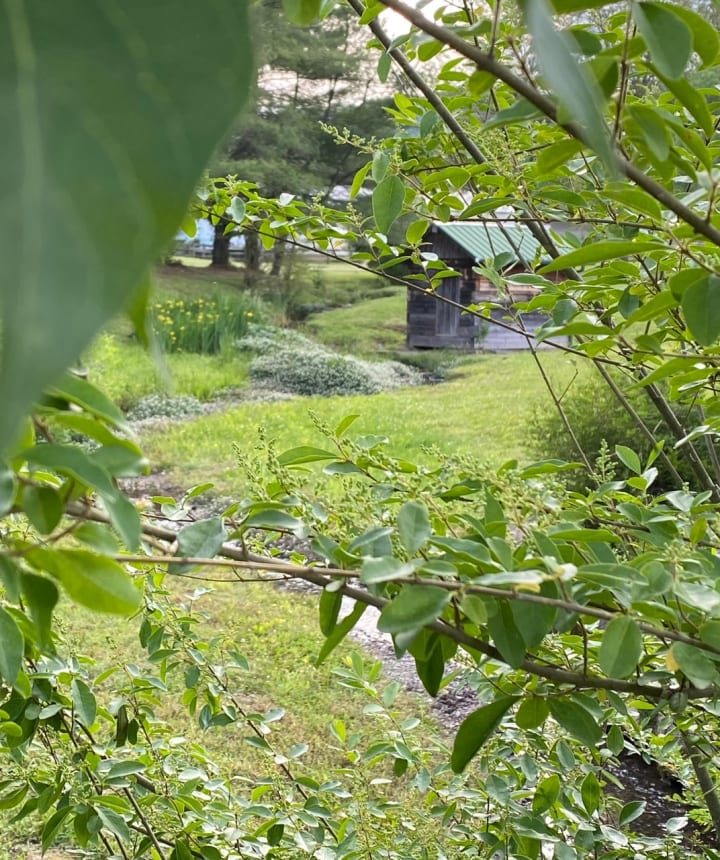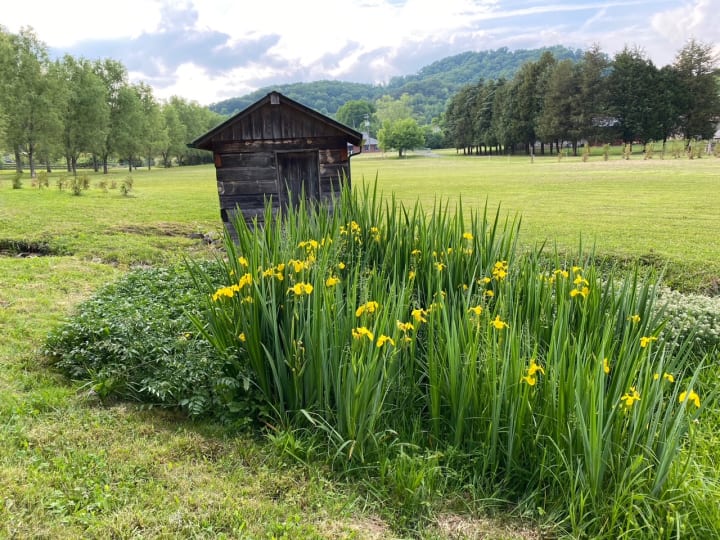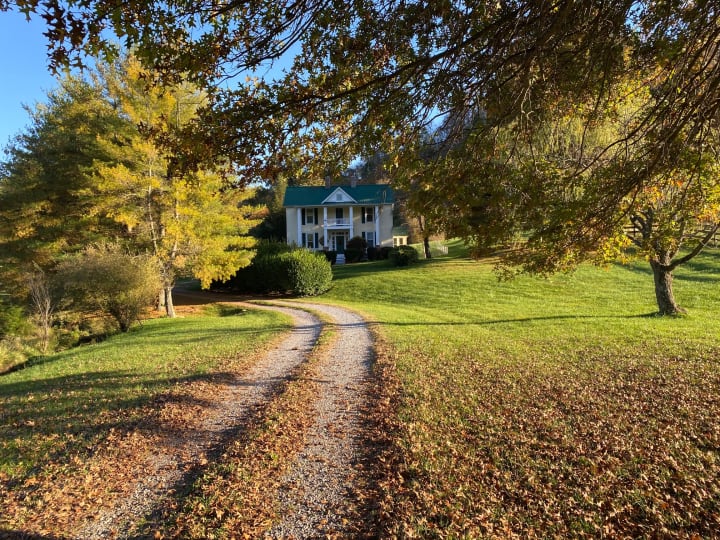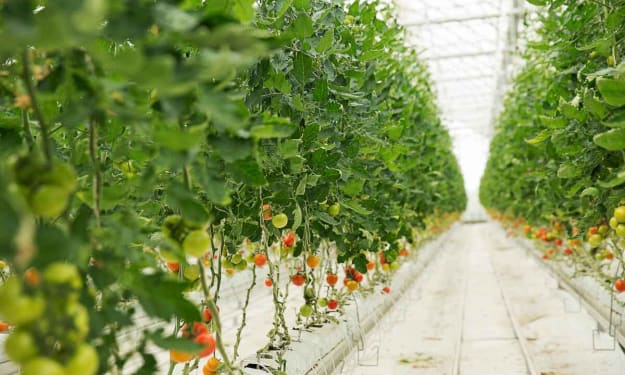Cultivating Joy
Fertilizing the Spirit

Growing up helping Mom and Dad in our garden, I always thought there was something magical and empowering about working the ground, planting a seed and putting food on our table. Likewise, it is deeply spiritual to me to stare up a towering silver maple that I remember Dad putting in the ground as a sapling; the same tree I used to cut the suckers and water sprouts from so one main trunk would grow tall, straight and true.
I’ve always had a knack for growing things, and I’ve always wanted to be surrounded by things that grow. Even when I didn’t have a plot of land to plant a seed, I had houseplants or herbs growing on the windowsill. There are some things the successful cultivation of still elude me, however, like the Trinidad Scorpion. At nearly 1.5 million Scoville units (a jalapeno is between 2500 and 8000 in comparison), the Trinidad Scorpion long held the record for the world’s hottest pepper second now only to the Carolina Reaper. I’ve started the Scorpion several times and one plant even produced one tiny pepper, but alas, it faded and died before the pepper ripened. For every failure though, I’ve managed dozens of successes like growing bushels of Country Gentleman sweet corn at 7000 feet on the dry, dusty plain of Colorado.


Colorado can be an especially difficult place to garden. I spent the last 10 years of my Army career in Colorado and some of those years were the hardest to bear, so I needed my gardens more than ever. Colorado is a plethora of microclimates, and most of them dry. If watering daily isn’t an option or not preferred as it wasn’t for me, then a gardener is forced to be creative. For my edible garden, I picked through thousands of seeds to find the fruits and vegetables with the shortest growing season and the best drought tolerance. The real fun came from designing and building my rock gardens, however. We had five acres of Colorado plain on the edge of the Black Forest with great views of Pikes Peak. The gardens that surrounded our home and lined our walk were planted with the wild, most aesthetically pleasing subjects found right on the property. From our five acres I found and moved purple irises (oddly enough the flower of my home state of Tennessee), dome cacti, pussy toes – a mounding plant that forms round, fuzzy white flowers that look like the bottom of a kitten’s paw, various sedums, ice plants, moss and so many other common and native plants.


I spent a total of 25 years in the Army, three of those years in the Middle East, always on the move never spending more than a few years at any place. My gardens were a home wherever I was. I even planted a patch of blue fescue outside my containerized housing unit while deployed to Iraq in 2006. Ants carried off most of my seed before it germinated and the grass that did grow didn’t last long, but rescuing me from my grief, I turned to cultivating a wild Capparis spinosa vine that produced beautiful flowers with really stinky fruit most might know better as a caper.

Those 25 years of Army life were hard enough without an escape. I can’t imagine what they would have been like without my gardens. I didn’t want to return Stateside after four years in Germany, and I certainly didn’t want to go to Fort Knox, Kentucky in the early 2000s, but 1.3 acres of partially wooded property on a country cul-de-sac gave me something to look forward to. That was a very prolific tiny garden at my Rineyville, Kentucky home. Daily, I would walk out to that square patch of dirt at the edge of my property, set my tool bucket on the ground, have a seat on my folding stool and devour cherry tomatoes straight from the vine, two and three at a time.
Since retiring from the Army in December 2013, in Colorado, my garden-scape has changed a few times, and my tool bucket has expanded to meet the needs. I’m sure there are all kinds of more convenient ways for a craftsman to move about with his tools, but I’m partial to my bucket. An antique, rusty iron milk bucket with bubbled white paint, gold trim and embellished with a federal eagle label on one side, my tool bucket is uniquely mine. I don’t even remember where I got it, but I know I’ve had it for more than 20 years. I tried making a planter out of it decades ago, but without a drain – and I didn’t want to drill a hole in it – nothing would live very long with soggy feet.


Though it failed as a planter, my bucket makes an excellent up-armored tool carrier. I know an armored tool carrier is probably overkill, but why not? Always in my ATC is a hand trowel and rake, a razor blade, scissors for collecting herbs or cutting small fruit from the vine and small garden shears for cutting through thicker stems or woody roots, a fence tool with hammer and claw, twine, zip-ties and wire because any or all these tools and materials might be needed at any time. Of course, it is adaptable to the job as well. If I’m working on fence, it will include fence staples and cable ties. If I’m laying fabric, it will include fabric pins or if I’m just planting flowers, I might have several packs of seeds in the bucket. For the bigger jobs requiring a shovel, a pick or a chain saw for example, I will need my tractor and trailer, but my bucket is always along for the ride.


We moved into our forever home one year ago this month, an historic home on 30 acres just outside Rogersville, Tennessee in the Appalachian foothills. We lack the equipment and materials for major vegetables or fruit production right now, though it is planned. For the time being, the ground’s existing flora have given me plenty of work to satisfy my need for peaceful gardening. The work is seldom fun and almost always filthy, but the reward of walking through well maintained gardens is pure joy. The mighty pin oaks that line our long driveway like to sucker and the lower limbs die out for lack of sunlight and need to be trimmed, but the regality they add to the front of our home is worth the effort.

There is Zen to be found sitting in front of our log spring house and dangling my feet into the creek staring across at the white flower-capped mounds of watercress backdropped by tall yellow water iris, but watercress is extremely fast growing and invasive. From time to time, I have to wrestle large quantities out of the creek, or it will effectively dam up the water. As a caveat, if it is thoroughly cleaned or cooked, the peppery watercress is a great addition to salads or stews.


Just on the grounds immediately surrounding our home, I care for native hemlock trees prone to woolly adelgid, a non-native, pesky aphid killing these majestic trees all over the Eastern U.S. Our magnolia blooms huge white flowers but drops leaves and bulky seedpods all summer long that make a mess of our rock courtyard. Weeping cherry and corkscrew willow suffer from fungal and bacterial infections requiring the infected area to be pruned away and medicines administered to the roots. Poison ivy loves the acidic soil under our white pines and if left unchecked will coil huge hairy vines around the tree trunks stealing valuable nutrients from the tree. Additionally, we have mountain laurel, dogwood, holly, boxelder, hackberry, sugar maple and a list of annuals that all need attention to flourish. My reward for this steady industry is pure JOY.

I’ve seen the world and lived my story, but I’m most happy and at peace on my ground, in my gardens, with my tools because my gardens cultivate me. Here my feet are watered, my soul is nourished and the suckers and water sprouts that dilute my life force are pruned away encouraging me to grow strong, straight and true.
About the Creator
The Bantering Welshman
M.S. Humphreys is The Bantering Welshman, an East Tennessee native, author, journalist, storyteller, marketing specialist, husband and step father. https://www.instagram.com/thebanteringwelshman/ and http://www.banteringwelshman.com






Comments
There are no comments for this story
Be the first to respond and start the conversation.